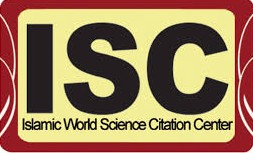التكامل بين القانون الدولي الجنائي والقانون الدولي الإنساني في مكافحة الإرهاب
DOI:
https://doi.org/10.35246/jols.v31is.106Keywords:
الارهابAbstract
Aujourd'hui, la communauté internationale confronte à de multiples cas et des problèmes complexes qui s’étendent leurs effets au-delà des frontières, ce qui menace la paix et de la sécurité au niveau national, régional et international, où le terrorisme représente ici l'un des plus graves de ces problèmes. En effet, ce phénomène est devenu une réalité qui touche la sécurité mondiale grâce à sa capacité d'influencer dans plusieurs pays, ce qui souligne l'importance et la nécessité d'une coordination et d'intégration entre les différentes branches du droit international public, en tant que cadre dans lequel peut adapter les activités nationales et internationales de lutte contre le terrorisme et de permettre aux États de coopérer efficacement entre eux pour lutter contre le terrorisme. Ce cadre comprend, dans ses différentes branches, instruments traitant des aspects spécifiques de la lutte contre le terrorisme qui sont intégrés les uns aux autres pour atteindre l'objectif principal, qui se réside à la protection de l'homme et la préservation de sa dignité humaine.
Downloads
References
المصادر العربية
1. اتفاقية جنيف الرابعة بشأن حماية الأشخاص المدنيين في وقت الحرب المؤرخة في 12آب/أغسطس 1949.
2. الملحق (البروتوكول) الثاني الإضافي إلى اتفاقيات جنيف المعقودة في 12 آب / أغسطس 1949المتعلق بحماية ضحايا المنازعات المسلحة غير الدولية.
3. النظام الأساسي للمحكمة الجنائية الدولية لرواندا لعام 1994.
4. النظام الأساسي للمحكمة الجنائية الدولية لعام 1998.
5. النظام الأساسي لمحكمة سرياليون لعام 2000.
المصادر الفرنسية
1. Rapport du Comité préparatoire pour la création d'une cour criminelle internationale, A/CONF.183/2/Add.1 14 avril 1998.
2. Office des Nations Unies contre la drogue et le crime, Manuel sur le rôle de la justice pénale dans la lutte contre le terrorisme, Série de manuels sur la réforme de la justice pénale, NATIONS UNIES, New York, 2009.
3. Office des Nations Unies contre la drogue et le crime, Questions les plus fréquemment posées sur les aspects du droit international touchant la lutte contre le terrorisme, NATIONS UNIES, New York, 2009.
4. Le comité international de la Croix - Rouge, Droit international humanitaire et terrorisme : questions et réponses. https://www.icrc.org/fre/resources/documents/faq/terrorism-faq-050504.htm.
ثانياً: المراجع العربية والأجنبية
المراجع العربية
1. انطونيو كاسيزي، القانون الجنائي الدولي، ترجمة مكتبة صادر ناشرون، المنشورات الحقوقية، لبنان، ط1.
2. د. سعيد سالم جويلي، المدخل لدراسة القانون الدولي الإنساني، دار النهضة العربية، القاهرة، 2002.
المصادر الأجنبية
1. Daryl A. Mundis, «New Mechanisms for the Enforcement of International Humanitarian Law», The American Journal of International Law, Vol. 95, No. 4 (Oct., 2001).
2. Doucet G, Terrorisme, « juridiction pénale internationale et victimes », Revue Internationale de Droit Pénal, 2005/3-4, vol 76.
3. Jean Marie Vianney NYIRURUGO, « La Cour Pénale Internationale et le terrorisme international: Le problème de compétence ratione materiae », Mémoire à Université Libre de Kigali - Rwanda, 2006.
4. Kevin Constant Katouya, Réflexions sur les instruments de droit pénal international et européen de lutte contre le terrorisme, Paris : Publibook, 2013.
5. Marie RAMBAUD, « Le Droit International Humanitaire face au terrorisme: les prisonniers de Guantanamo », Mémoire, UNIVERSITÉ LUMIERE LYON 2, Institut d'Etudes Politiques, 2007.
6. Philippe KIRSCH, Terrorisme, crimes contre l’humanité et Cour pénale internationale.
. http://www.sos-attentats.org/publications/Kirsch.pdf.
7. Renaud de LA BROSSE, « Les trois générations de la justice pénale internationale », Annuaire français de relations internationales, volume 6, 2005.
Downloads
Published
Issue
Section
License
Copyright and Licensing:
For all articles published in Journal of Legal Sciences, copyright is retained by the authors. Articles are licensed under an open access Creative Commons CC BY 4.0 license, meaning that anyone may download and read the paper for free. In addition, the article may be reused and quoted provided that the original published version is cited. These conditions allow for maximum use and exposure of the work.
Reproducing Published Material from other Publishers: It is absolutely essential that authors obtain permission to reproduce any published material (figures, schemes, tables or any extract of a text) which does not fall into the public domain, or for which they do not hold the copyright. Permission should be requested by the authors from the copyrightholder (usually the Publisher, please refer to the imprint of the individual publications to identify the copyrightholder).
Permission is required for: Your own works published by other Publishers and for which you did not retain copyright.
Substantial extracts from anyones' works or a series of works.
Use of Tables, Graphs, Charts, Schemes and Artworks if they are unaltered or slightly modified.
Photographs for which you do not hold copyright.
Permission is not required for: Reconstruction of your own table with data already published elsewhere. Please notice that in this case you must cite the source of the data in the form of either "Data from..." or "Adapted from...".
Reasonably short quotes are considered fair use and therefore do not require permission.
Graphs, Charts, Schemes and Artworks that are completely redrawn by the authors and significantly changed beyond recognition do not require permission.
Obtaining Permission
In order to avoid unnecessary delays in the publication process, you should start obtaining permissions as early as possible. If in any doubt about the copyright, apply for permission. Journal of Legal Sciences cannot publish material from other publications without permission.
The copyright holder may give you instructions on the form of acknowledgement to be followed; otherwise follow the style: "Reproduced with permission from [author], [book/journal title]; published by [publisher], [year].' at the end of the caption of the Table, Figure or Scheme.











